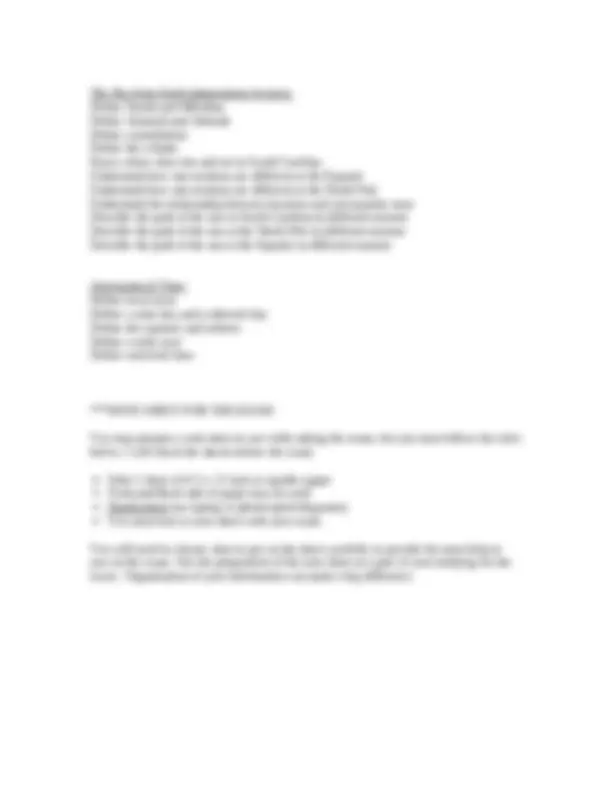



Study with the several resources on Docsity

Earn points by helping other students or get them with a premium plan


Prepare for your exams
Study with the several resources on Docsity

Earn points to download
Earn points by helping other students or get them with a premium plan
Community
Ask the community for help and clear up your study doubts
Discover the best universities in your country according to Docsity users
Free resources
Download our free guides on studying techniques, anxiety management strategies, and thesis advice from Docsity tutors
A study guide for exam 1 of the elementary astronomy course (psc 203) offered in spring 2007. The guide covers various topics related to the sun-earth-moon system, phases of the moon, seasons, eclipses, and the sky from earth. Students are expected to understand concepts such as the sizes and orbits of celestial bodies, tilts of objects, synchronous orbit, phases of the moon, explanations for seasons, and eclipse types. The document also includes information on astronomical time and star motions.
Typology: Exams
1 / 2

This page cannot be seen from the preview
Don't miss anything!


PSC 203 – Elementary Astronomy Spring 2007 Study Guide for Exam 1: Exam scheduled for February 22 The following is a rough idea of the topics that will be on the exam grouped by the lecture in which material was presented. Sun-Earth-Moon (SEM) System Overview: Recognize the relative sizes of the Sun, earth, and Moon Recognize the relative sizes of the orbits for the Sun-earth and earth-moon Define an astronomical unit Know the tilts of objects and orbits in the SEM Understand the synchronous orbit of the moon Know how long each motion takes in the SEM Phases of the moon: Match names for phases and % illuminated Match names for phases and pictures from earth Match view from earth to geometry in space Figure out when each phase is visible Seasons: Recognize the correct explanation for the seasons Understand how changing Earth’s tilt would affect seasons Know how angle affects the heating efficiency Explain why misconception about the seasons cannot be correct Recognize the relationship between seasons and hemisphere Recognize the geometry of the Earth during different seasons Eclipses: Define solar and lunar eclipses Define partial, total, and annular eclipses Recognize a visual example of the solar eclipse types Know the phases of the moon when eclipses can occur Recognize the geometry for solar and lunar eclipses Explain why eclipses are so rare Define umbra and penumbra Explain how umbra and penumbra are related to solar eclipse types Additional topics listed on back
The Sky from Earth (planetarium lecture): Define Zenith and Meridian Define Azimuth and Altitude Define constellation Define the ecliptic Know where stars rise and set in South Carolina Understand how star motions are different at the Equator Understand how star motions are different at the North Pole Understand the relationship between location and circumpolar stars Describe the path of the sun in South Carolina in different seasons Describe the path of the sun at the North Pole in different seasons Describe the path of the sun at the Equator in different seasons Astronomical Time: Define local noon Define a solar day and a sidereal day Define the equinox and solstice Define a solar year Define universal time ***NOTE SHEET FOR THE EXAM You may prepare a note sheet to use while taking the exam, but you must follow the rules below. I will check the sheets before the exam. Only 1 sheet of 8 ½ x 11 inch or smaller paper Front and Back side of paper may be used Handwritten (no typing or photocopied diagrams) You must turn in your sheet with your exam. You will need to choose what to put on the sheet carefully to provide the most help to you on the exam. Use the preparation of the note sheet as a part of your studying for the exam. Organization of your information can make a big difference.